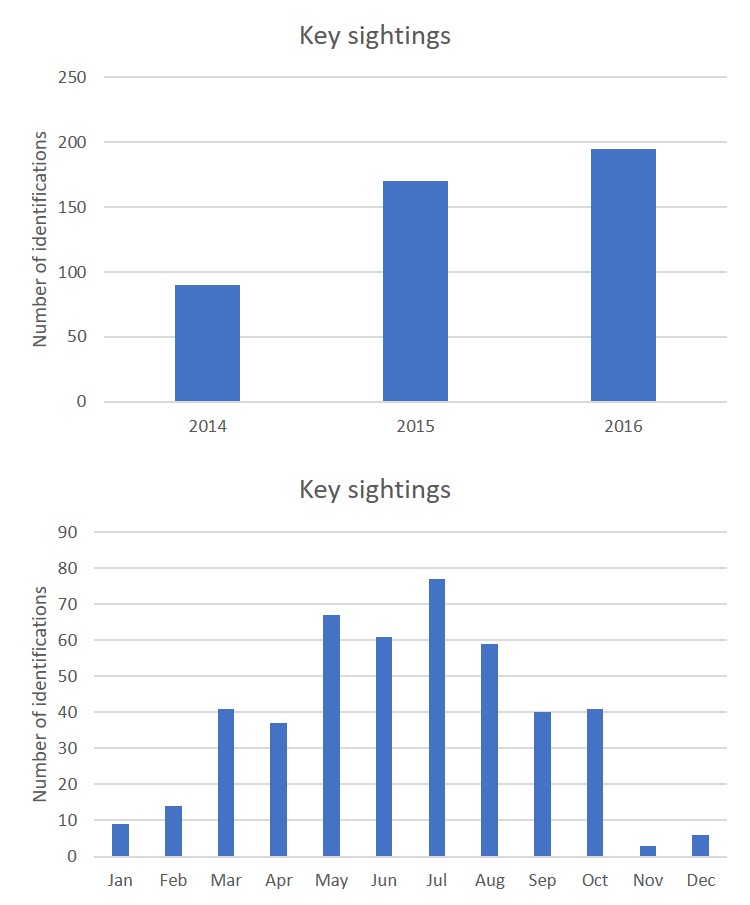Late autumn on the Lizard coastline can be a wild time and, for grey seal mums, major life events are unfolding beneath steep cliffs edged by crashing waves. Hardy volunteers from Cornwall Seal Group Research Trust (CSGRT) brave the elements daily to protect our seals at this important time. Such intense research studies reveal fascinating insights into the lives of these precious marine mammals – Cornwall’s speciality marine species. The stories that unfold can be a magical experience for all – never to be forgotten.
The general wisdom on grey seals is that, from the age of six years old onwards, mums travel to the site where they were born to have their pups. They arrive and within a couple of days give birth to a skinny, bony pup weighing in at around 10kg. They feed their pup for just three short weeks before mating and leaving the area only to return the following year to repeat the cycle.
But...like humans, grey seals are individuals and some have clearly not read the seal textbook! One such seal is a charismatic adult female called Key. Key spends most of her time around a Lizard headland where she might be identified up to 195 times in a single year, with sightings increasing to a peak in July. So in 2014 we fully expected her to disappear to have her pup. Seals love proving us wrong and in October 2014 she did just that, shocking us all by having her pup right under our noses! Needless to say, being a creature of habit, she repeated this amazing spectacle three years running, giving birth on 14/10/14, 02/10/15 and 29/09/16.
 A complete daily profile of her 2016 pup has been compiled and this has given us some unparalleled insights into this critical time. On day 1, the sudden appearance of a new pup adjacent to a fresh placenta meant we had just missed witnessing the birth. Subsequently this skinny, baggy bundle of white fluff was closely monitored by an incredible and inspiring team of CSGRT and National Trust volunteers.
A complete daily profile of her 2016 pup has been compiled and this has given us some unparalleled insights into this critical time. On day 1, the sudden appearance of a new pup adjacent to a fresh placenta meant we had just missed witnessing the birth. Subsequently this skinny, baggy bundle of white fluff was closely monitored by an incredible and inspiring team of CSGRT and National Trust volunteers.
Contrary to expectations, the pup kept his pink umbilicus for three days (it was expected to have dried and to have begun turning black during this time) and made little perceptible growth. After this his rolls of skin began to disappear as it was stretched by the underlying blubber being created from copious quantities of his mother’s rich milk. By day 11 he had begun to balloon and on days 12 and 13 he appeared to go for his first swimming lessons closely guarded by Mum. Perhaps this sparked the moulting process as it was clear by day 15 that his long white fur had begun to thin, revealing his mottled pattern underneath. By now he was estimated to weigh around 40kg and resembled a barrel!
Day 16 saw Key mating with her beachmaster, an event that was repeated the following day – multiple mating events have not been reported in the scientific literature of this species. After weaning, Key disappeared leaving Pup to teach himself to feed. Having lost a third of her body weight feeding him, Key was in desperate need of food herself and she was seen only five times for the rest of the year.
Incredibly, by day 19 virtually all Pup’s long white fur had been lost, revealing his unique coat pattern from which we shall be able to recognise him throughout his life. This was fortunate as he took to the sea exploring and by day 20 he went awol, but he returned for a well earned rest on his familiar beach on day 21. He disappeared again for the next four days and was not photographed again offshore until day 26, after which he left the area to explore the open ocean on 24/10/16. At the time of writing we hope Pup has taught himself to feed and has stopped living off his fat reserves. This is the most challenging and risky time in his development. We wish him all the best on his adventures and hope he will return to delight us once his post weaning dispersal phase is over. Only time will tell!
This detailed insight into the development of a grey seal pup is rare and we are privileged to be able to witness such awesome events taking place right here around the Lizard each autumn!
Please email your seal sightings to sue@cornwallsealgroup.co.uk.
Huge thanks to all our volunteers, especially Alec and Enid Farr and Terry Thirlaway.
If you see a young seal whilst out and about, please keep you distance and leave it to rest undisturbed. Never return it to the sea. If you are concerned, please ring the British Divers Marine Life Rescue hotline 01825 765546 and they will send out a trained Marine Mammal Medic to assess the situation and determine the best course of action, if any.
Published: Mar 2017
Author: Sue Sayer (Cornwall Seal Group Research Trust)
